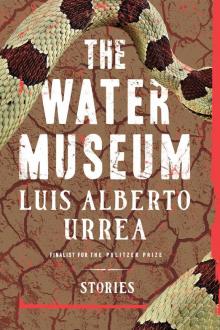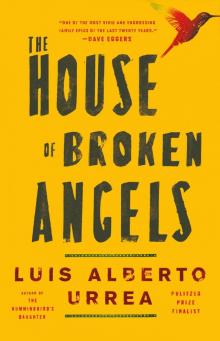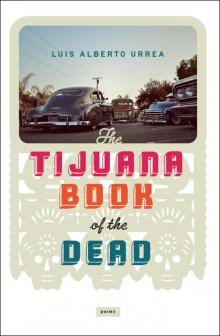- Home
- Luis Alberto Urrea
The Devil's Highway: A True Story Page 22
The Devil's Highway: A True Story Read online
Page 22
Is there a solution to what’s happening along the border?
Of course there’s a solution. There are any number of solutions. That doesn’t mean I know what they are. The New York Times has been doing an incredible job lately of revealing some of the economic realities behind the United States’ semi-secret welcoming of undocumented workers. You could begin by studying their coverage. Clearly, the Mexican government is culpable. Bring them to account. United States corporate bosses are culpable. Border enforcement policy is out of date and unworkable.
It seems evident at this point that the promised benefits of NAFTA have moved on to benefit China and the Indian subcontinent. I could go on with this litany of woes. Everybody knows that there’s trouble on the border.
However, we must look at the thousands of visionary localized efforts on both sides of the border to change the paradigm. I’ve already pointed out in The Devil’s Highway how the Wellton Border Patrol station has erected life-saving towers. Such groups as Tucson’s Humane Borders save lives. Think what you will of the Minutemen, whether they are patriots or racist stooges, they give evidence that Americans are deeply concerned, even if their government doesn’t seem to be. What I wish is that these citizens could learn about the sources of this biblical exodus north. As one Border Patrol agent said to me, “If I had my way, I wouldn’t patrol the border. I’d patrol corporate headquarters of [insert your favorite fast food chain restaurant here].”
The immense flow of remittance money to Mexico from the United States is transforming myriad communities almost overnight. It turns out we have an overwhelmingly generous foreign aid policy to Mexico: it’s just filtered through Burger King. Groups of investment bankers across the U.S. Border are creating micro-economic zones in mainland Mexico. These small, intense investment zones support localized industries in the hopes that they can reach critical mass and begin to network into a new economy. Along with the financial investment into Mexico, you cannot discount the effect of the Americanized Mexican who will vote in Mexican elections and who is now indoctrinated with certain truths that we hold dear. You will see an era, if we play this right, of border perestroika.
The arts are flourishing. Music, film, and literature flow back and forth across the border. Human information flows more than ever. It seems incredible, but there is an Internet café at the site of the Tijuana municipal garbage dump. People who pick the trash have teenagers who can surf the ’net. The era of cell phones, satellite dishes, the Internet is not only affecting the Middle East. Democracy is on a roll south of the border.
Finally, in a small—and I find humorous—way, change is afoot in my old homeland of Baja California. Not only is the vast Fox movie studio south of Tijuana, and Cabo-mania at the far tip of the state, but, in between, Baja is changing into a mecca for American retirees. Certain projections suggest that within the decade, there will be more than one million white North Americans living permanently in Baja California. I suggest that when you have one million American retirees somewhere, it is no longer Mexico, it is Iowa.
Questions and topics for discussion
1. At its heart, The Devil’s Highway is the story of a journey in the hope of starting a better life. Every family in the United States arrived here from somewhere else. What is your family’s story?
2. The Devil’s Highway is the story of the U.S.-Mexico border, but it is also about many other invisible borders. Aside from the physical border itself, what other borders separate the people in this story?
3. What borders separate all of us as people? If these borders exist, is there any way to bridge them? Or do we need these borders?
4. Is Jesus Antonio Lopez Ramos, aka Mendez, the villain of the story? Did he get what he deserved?
5. The theme of survival may be evident for the walkers, but how does it also apply to the Border Patrol and the smugglers themselves? To what lengths would you go to feed your family?
6. There seems to be a theme of occult and spiritual forces behind the scenes in the Arizona desert. Are these references offered symbolically, or are these presences an actual reality?
7. Luis Alberto Urrea writes that some of the Yuma 14/Wellton 26 were “aliens before they ever crossed the line.” What does this statement mean?
8. In the opening pages of The Devil’s Highway, the author draws a parallel between the issues of today’s border and the United States’ treatment of Chinese “coolies” in the nineteenth century. Can you think of historical parallels to any other current hot-button issues?
9. The Devil’s Highway examines the border from many different points of view. Do you think the author approached the topic with a truly objective eye?
10. Imagine that you have been granted the ultimate power to set border policy. What would you do? Why would your solution work? Why might it not?
Luis Alberto Urrea’s suggestions for further reading
Dead in Their Tracks by John Annerino
This is the bible for anyone interested in the long dark history of the Camino del Diablo.
Down by the River by Charles Bowden
Many sources cite this book as the best document of border drug smuggling. You can’t analyze the border and its immigration woes without looking at its evil twin, narco-trafficking.
Coyotes by Ted Conover
I’m happy to say Ted’s a friend of mine. However, I would suggest this book even if he were not. It’s a wonderful example of participatory journalism.
Border by Lila Downs
All right, I’ll admit it, this isn’t a book. It’s a CD. But Downs, the goddess, can show you more of the border soul in one song than many of us can capture in an entire book.
Hard Line: Life and Death on the U.S-Mexican Border by Ken Ellingwood
In some ways, this book has been competition for The Devil’s Highway, but Mr. Ellingwood was the go-to guy on the Border Patrol and immigration enforcement issues for the last ten years while working for the Los Angeles Times.
Crossing Over by Ruben Martinez
If you want to know what it feels like from Mexican village to border crossing to the long and dangerous migrants’ road through the United States, this is an excellent place to start.
Twilight on the Line by Sebastian Rotella
One of my all-time favorite border books. One of the few books that can teach even me something new about the border.
Across the Wire by Luis Alberto Urrea
It feels like cheating to recommend my own book, but if I’m being honest, I can’t think of another book that shows you street-level life in the poorest parts of the Mexican border.
LOOK FOR THE NEW NOVEL BY
LUIS ALBERTO URREA
The Hummingbird’s Daughter
“A stunning, sumptuous, poetically charged epic. … The novel’s central narrative is about a young girl with magical powers growing up on an isolated rancho in the Sonoran Desert during the tumultuous final decades of the nineteenth century, when modern Mexico was being born. … A word-drunk, visionary reverie that constantly amazes and delights with its sense of teeming, sensual profusion.”
— Larry McCaffery, San Diego Union-Tribune
“Brilliant. … A powerful tale that satisfies the soul. … Opening the pages of The Hummingbird’s Daughter is like being swept up in a whirlwind of description so sensuous that one tastes, feels, and hears the unfolding of events. … Urrea’s language is richly textured, creating a poetic fiction raised to the heights of a Gabriel García Márquez.”— Rudolfo Anaya, Los Angeles Times
“Immensely entertaining. … An extraordinary novel. … The Hummingbird’s Daughter breathes with life, populated with multiple, complex, and genuinely individual characters. … At a time when so much fiction is prone to self-analysis and post-modern posturing, Urrea has accomplished that rarest of things in literature: He has created a world that stands on its own.”
— David Hellman, San Francisco Chronicle
Published by Little, Brown and Company • Available
wherever books are sold

 Queen of America
Queen of America The Water Museum
The Water Museum The House of Broken Angels
The House of Broken Angels The Devil's Highway: A True Story
The Devil's Highway: A True Story Tijuana Book of the Dead
Tijuana Book of the Dead Into the Beautiful North
Into the Beautiful North